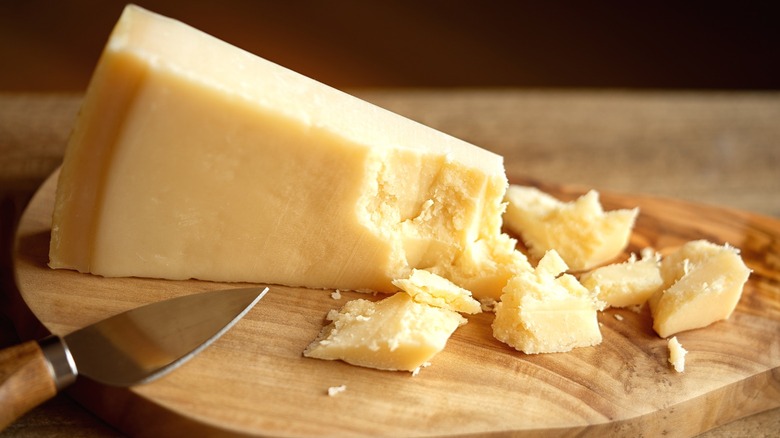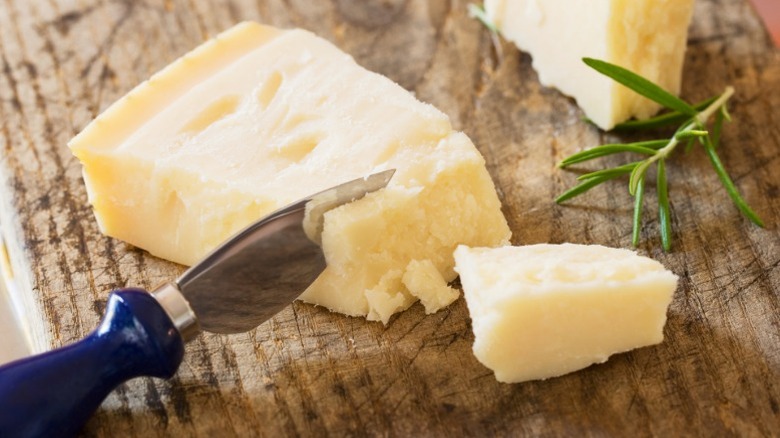Is Parmigiano Reggiano Just A Fancy Way Of Saying Parmesan Cheese?
You've probably heard of parmesan cheese. Maybe you buy it in a shaker to sprinkle over your pasta (remember you can reuse the lids from parmesan bottles, too) — or maybe you buy a wedge to grate yourself if you have a date you want to impress. You've also probably heard of Parmigiano Reggiano cheese, and — not unreasonably, considering the name — perhaps assumed there was some connection between the two. So what's the deal? Is there any difference between these two cheeses, or are they essentially the same thing?
Well, it's the sparkling wine versus Champagne thing again — or the difference between brandy and Cognac, as another example. Cheese can only be called Parmigiano Reggiano if it was made in one of five Italian provinces: Parma, Reggio Emilia, Bologna, Mantua, or Modena. Like Gruyère and Comté cheeses, it has a protected status, and must be made according to strict rules.
This means that even if you made a cow milk cheese identical to Parmigiano Reggiano outside of those five provinces in Italy, you cannot legally call it by that name. Manufacturers even engrave the rind of Parmigiano Reggiano to prove the Protected Designation of Origin (PDO), which denotes its authenticity and quality. The grainy cheese adds a distinctive nutty and umami-rich flavor to many dishes, from risotto to salads. So how does it compare to parmesan?
In America, parmesan is not regulated
In the European Union, even the word "parmesan" is protected, meaning you can't sell non-Parmigiano Reggiano cheese under that name. But in America, as is so often the case, regulations are much less strict. If you're buying something called "parmesan" in the United States, it almost certainly isn't Parmigiano Reggiano. Most likely, it will be an imitation cheese produced by one of our many dairy companies.
These regulations (or lack thereof) also extend to the aging process. While you can't sell Parmigiano Reggiano without aging it for at least a year, and can even find varieties aged over 40 months, you can sell parmesan aged for as little as 10 months. But don't worry — those white spots on parmesan aren't mold.
Now, that doesn't mean every parmesan is a feeble imitation of the mighty Italian cheese. Although Parmigiano Reggiano is thought of highly enough to be considered "the king of cheeses" by some, many American-made parmesans are great options in their own right. They can work beautifully when combined with panko breadcrumbs as a topping for the crispest possible mac and cheese, for example. In any case, you can buy both domestic and imported parmesan — although the latter will probably cost you a bit more. In either case, use parmesan rinds to make a delicious broth to ensure you're not wasting anything. Alternatively, if you want to substitute another traditional Italian hard cheese, try Pecorino Romano or Grana Padano.

